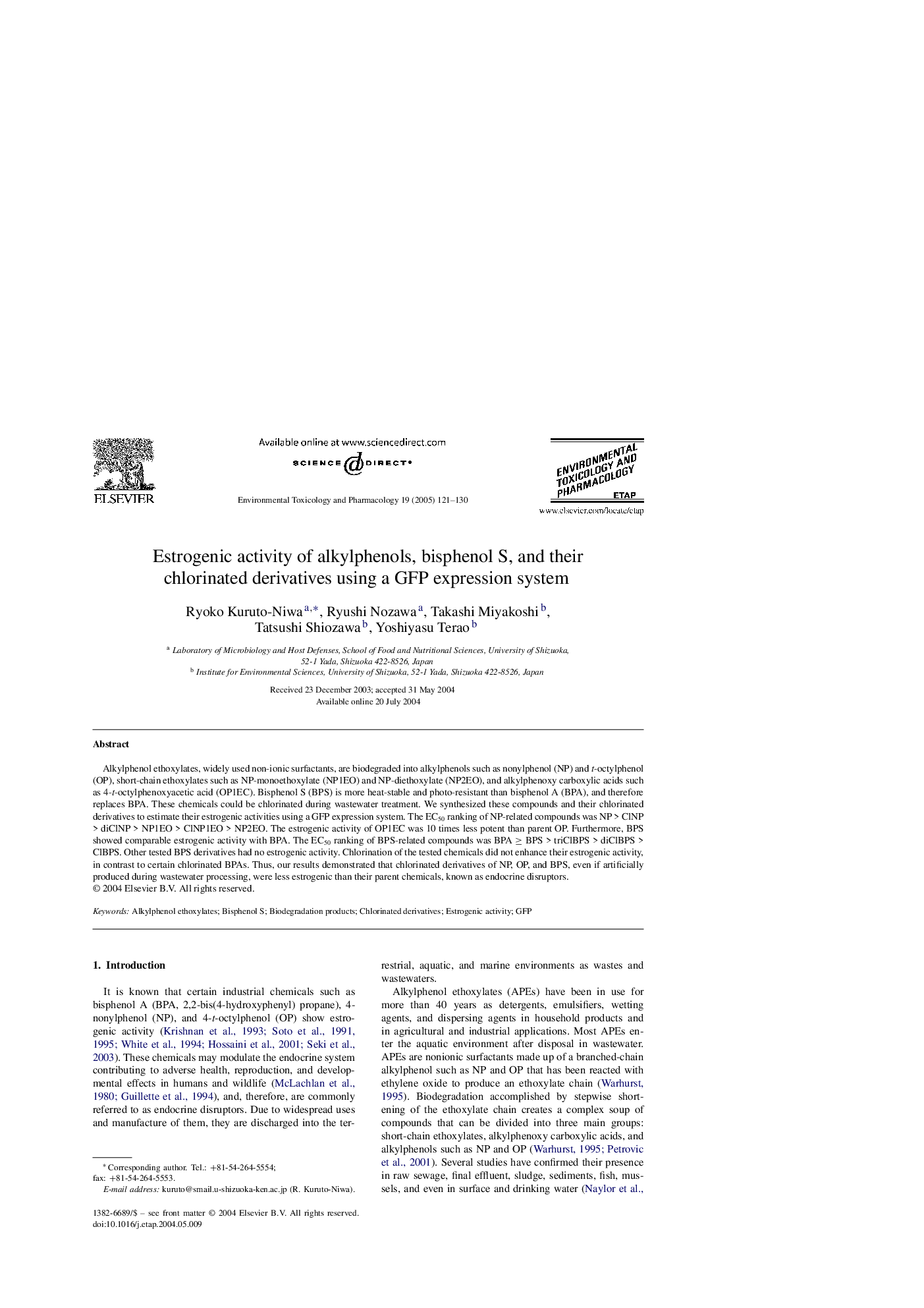| Article ID | Journal | Published Year | Pages | File Type |
|---|---|---|---|---|
| 9030324 | Environmental Toxicology and Pharmacology | 2005 | 10 Pages |
Abstract
Alkylphenol ethoxylates, widely used non-ionic surfactants, are biodegraded into alkylphenols such as nonylphenol (NP) and t-octylphenol (OP), short-chain ethoxylates such as NP-monoethoxylate (NP1EO) and NP-diethoxylate (NP2EO), and alkylphenoxy carboxylic acids such as 4-t-octylphenoxyacetic acid (OP1EC). Bisphenol S (BPS) is more heat-stable and photo-resistant than bisphenol A (BPA), and therefore replaces BPA. These chemicals could be chlorinated during wastewater treatment. We synthesized these compounds and their chlorinated derivatives to estimate their estrogenic activities using a GFP expression system. The EC50 ranking of NP-related compounds was NP > ClNP > diClNP > NP1EO > ClNP1EO > NP2EO. The estrogenic activity of OP1EC was 10 times less potent than parent OP. Furthermore, BPS showed comparable estrogenic activity with BPA. The EC50 ranking of BPS-related compounds was BPA ⥠BPS > triClBPS > diClBPS > ClBPS. Other tested BPS derivatives had no estrogenic activity. Chlorination of the tested chemicals did not enhance their estrogenic activity, in contrast to certain chlorinated BPAs. Thus, our results demonstrated that chlorinated derivatives of NP, OP, and BPS, even if artificially produced during wastewater processing, were less estrogenic than their parent chemicals, known as endocrine disruptors.
Related Topics
Life Sciences
Environmental Science
Health, Toxicology and Mutagenesis
Authors
Ryoko Kuruto-Niwa, Ryushi Nozawa, Takashi Miyakoshi, Tatsushi Shiozawa, Yoshiyasu Terao,
